The phrase “last but not least” was likely never more appropriate. Though this is the last article of our “13 Things That Saved Apollo 13” series, it might be the most important. “Each time I’ve heard Jim Lovell or Fred Haise speak of the rescue,” said NASA engineer Jerry Woodfill, “they have always expressed their gratitude to the folks on the ground who contributed to saving their lives.”
And it wasn’t just the astronauts who were grateful. As a testament to the appreciation the rest of the country felt, the Mission Operations Team for Apollo 13 — those who worked in the Mission Operation Control Room (MOCR – more commonly called Mission Control) and the Mission Evaluation Room (MER) — were awarded a Presidential Medal of Freedom.
“We fulfilled the latter part of President Kennedy’s mandate,” said Woodfill, “by returning them safely to Earth.”
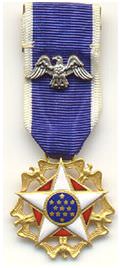
In previous articles in this series, we’ve highlighted just a few people who made significant – and some unsung – contributions to the Apollo 13 rescue. But likely every person who was part of the mission operations team made a contribution.
The words of President Richard Nixon as he presented the medal on April 18, 1970, perhaps say it best:
“We often speak of scientific ‘miracles’ – forgetting that these are not miraculous happenings at all, but rather the product of hard work, long hours and disciplined intelligence.
The men and Women of the Apollo XIII mission operations team performed such a miracle, transforming potential tragedy into one of the most dramatic rescues of all time. Years of intense preparation made this rescue possible. The skill coordination and performance under pressure of the mission operations team made it happen. Three brave astronauts are alive and on Earth because of their dedication and because at the critical moments the people of that team were wise enough and self-possessed enough to make the right decisions. Their extraordinary feat is a tribute to man’s ingenuity, to his resourcefulness and to his courage.”
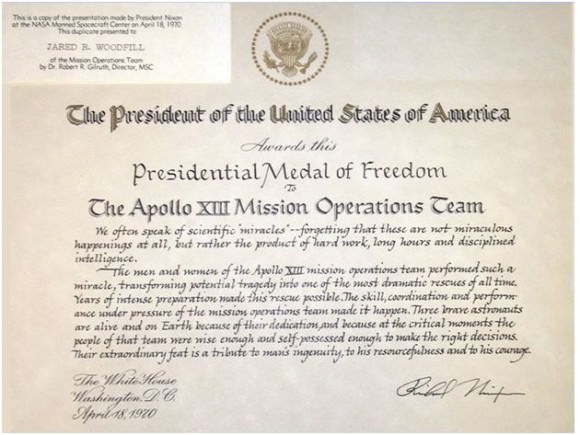
But, says Woodfill, it wasn’t just those whose names are listed on the initial award.
“There were a thousand more who never were named though their contribution was huge. I could write another hundred accounts of specific acts which, had they not been done, could have resulted in disaster. There was an unseen “cloud of helpers” whom I now know helped just as much as I did though they were never recognized. These folks weren’t even NASA employees or affiliated with the supporting contractors, Grumman (GAEC) or North American Aviation (NAA). Universe Today could go on for months, on a daily basis if I could add all these accounts. Studying something for 40 years brings forth this kind of thing.”
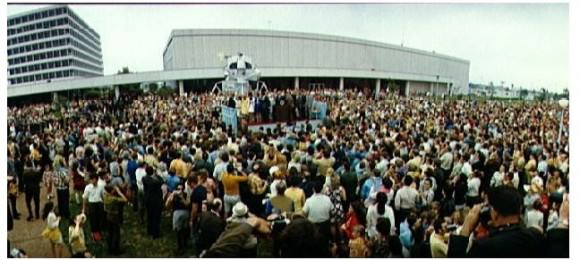
But since Apollo 13 happened 40 years ago, many of those involved are no longer alive. Woodfill said astronaut Jack Swigert is an example. A 40th anniversary celebration of the Apollo 13 mission at Johnson Space Center in April included a panel discussion with Jim Lovell, Fred Haise, Gene Kranz, Glenn Lunney, John Aaron, and was moderated by Jeffrey Kluger, co-author with Lovell of the book Lost Moon.
Read Woodfill’s account of the celebration on his website.
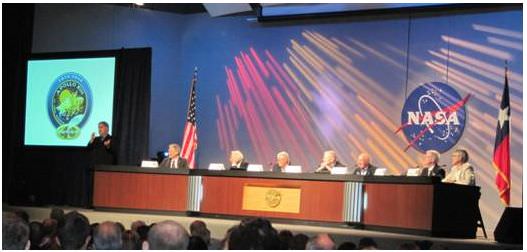
“During that two hour exchange, I added a half dozen more insights of unique things that saved Apollo 13,” said Woodfill. “But when the Q&A launched, I all but ran to the microphone to ask the first question: ‘Jim and Fred, could you comment on Jack Swigert’s contribution?’ Their remarks were gracious and appreciative, remembering their friend and crewmate. Neither they nor the country has forgotten Jack. He is the only astronaut to be honored by a statue in Congress, as he became an elected representative in Congress from the State of Colorado. Sadly, cancer took Jack’s life before he could serve. But I think if Jack could speak to us about his experience on Apollo 13, he might select the Mission Operations Team as well. In a sense, he represents all those no longer with us. They helped make it possible for Jim and Fred to have blessed us for the past 40 years with the altogether inspirational story of the rescue of Apollo 13.”
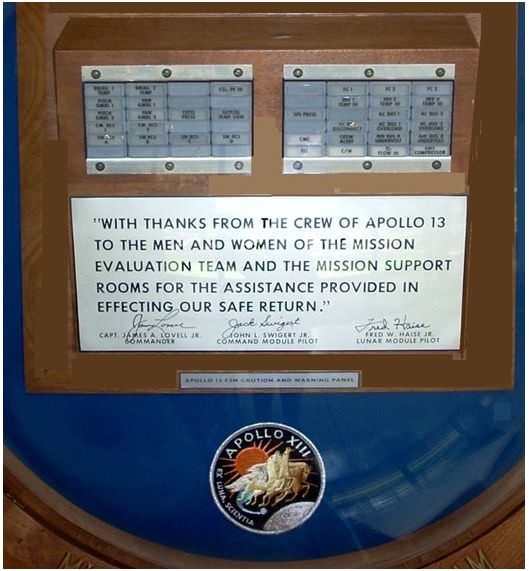
So, while we have only scratched the surface among the many stories of Apollo 13’s rescue, surely there are thousands more tales of people being in the right place at the right time, decisions made years earlier that led to working at NASA, and chance meetings or discussions that opened up opportunities or jogged ideas for the rescue.
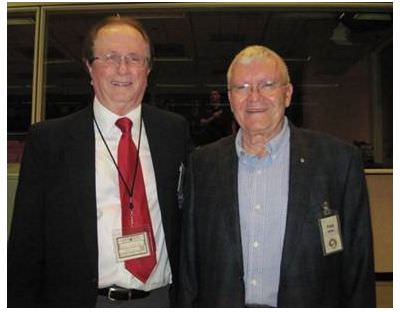
Jerry Woodfill is an example of such a story. He was attending Rice University on a basketball scholarship, a dream that inexplicably came true.
“However, my career as a college basketball player was as dismal as America’s early endeavors in space,” Woodfill admitted. “Sadly, I hold the record of the lowest shooting percentage in Rice University history…one out of eighteen shots! And the one shot I made at Baylor University with seconds left in the first half was a desperate 35 foot pass to our center under the basket. It sailed too high and went through the hoop. My only basket was actually a bad pass! In truth, I was zero for eighteen.”
He wasn’t doing very well in his classes, either. But then President John Kennedy came to Rice University to give a speech, a speech which helped launch the US to the Moon:
“But why, some say, the moon? Why choose this as our goal? And they may well ask why climb the highest mountain? Why, 35 years ago, fly the Atlantic? Why does Rice play Texas? We choose to go to the moon in this decade and do the other things, not because they are easy, but because they are hard, because that goal will serve to organize and measure the best of our energies and skills, because that challenge is one that we are unwilling to postpone, and one which we intend to win, and the others, too.”
— John F. Kennedy, in his speech at Rice University, September 12, 1962
Inspired by Kennedy’s speech, Woodfill turned in his basketball shoes and focused on his studies of electrical engineering, hoping to become part of the space program to send people to the Moon – and return them safely to the Earth.
Yes, Woodfill become one of the half million Americans teaming up together to put the first men on the Moon.
And the rest is history.
Our extreme thanks to Jerry Woodfill for sharing his story, insights, and expertise as well as his warmth, humor and passion for NASA’s mission. “Godspeed to all you Apollo 13 rescuers, past and present, known and unknown!”
The “13 Things That Saved Apollo 13” series:
Part 2: The Hatch That Wouldn’t Close
Part 3: Charlie Duke’s Measles
Part 4: Using the LM for Propulsion
Part 5: Unexplained Shutdown of the Saturn V Center Engine
Part 6: Navigating by Earth’s Terminator
Part 8: The Command Module Wasn’t Severed
Part 12: Lunar Orbit Rendezvous
Part 13: The Mission Operations Team
Also:
Your Questions about Apollo 13 Answered by Jerry Woodfill (Part 1)
More Reader Questions about Apollo 13 Answered by Jerry Woodfill (part 2)
Final Round of Apollo 13 Questions Answered by Jerry Woodfill (part 3)
Never Before Published Images of Apollo 13’s Recovery
Listen to an interview of Jerry Woodfill on the 365 Days of Astronomy podcast.

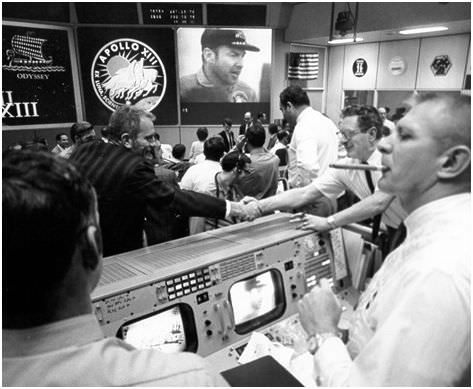
Odd to give credit to Nixon, but good on him for not Godding it up.
Scary to see what the presidency has devolved to.
@ Sili,
Ditto!
Thank you very much for the series. From day 1 I’ve suspected that the Human element will be the most important and I see I was right.
Gadi
“”Scary to see what the presidency has devolved to.””
Equally as importaint…… what all 535 members of Congress on both sides of the aisle and the over 4000 paid lobbyists that influence them have devolved to.
Nice series, and while references are lacking (not a complaint, mind you!) the rest looks like the definitive treatment of the subject.
To expand on the comments:
– I don’t think Nixon is credited for the missions but for the sentiment. I may be mistaken, but I have gotten the impression he was a competent speaker and analyst. (Who made some glaring mistakes in the latter department though. Something about persecutory delusions and tapes, I think.)
– I don’t see how one can pick and use a measure for “most important” out of the series.
First, the whole series is based on 13 factors that had to come together. In that sense they were all equally important. Sure, you can say that for example “without the flexibility of the system it wouldn’t have had the needed freedom for the changed rescue mission”, But equally then you could say that “without human savvy it wouldn’t have been possible to use the provided freedom needed for the changed rescue mission”.
Second, there has been no measure proposed to set one before the other. (And I dunno that is possible in cases such as this, due to the interlocking of factors and outcomes.) On the contrary, the proposition “last but not least” suggest the exact opposite.
To read something into a text and then find out that the reading was the intended one is neither “right” nor “wrong”. It is an exercise which always works, is all.
If I would say something about adaptable organization and time-constrained ingenuity it would be that it is often the most complex and hard to come by element. Potato, potatoe.
Sorry, Torbjørn, I’m being too elliptical.
I mean that it feels odd for me to have to give credit to Nixon for something good.
For all his faults, this he did right. (And I like the speech in case Apollo 11 had failed as well.)
Superb series of articles. I was riveted to each one as much as I was riveted to the motion picture. It added a great deal of insight into the pioneering days of the U.S. space program. It is amazing to think of what they accomplished with technology (especially in electronics) that would be considered archaic today. How impressive was this bunch, you may ask? The fact that no person has set foot on the moon since the program ended says it all. It is clear to me that the people behind the program are every bit as impressive as what they accomplished. They proved that mankind’s future in space is bright once we decide to push the fronteir of manned exploration forward again.
In part 2, Woodfill is quoted as saying that the command module’s batteries weren’t ever supposed to be used except during re-entry.
This is not actually true. Yes, the fuel cells were the primary power source for the CM until entry when those batteries took over. But there were times when the CSM needed more power than all three fuel cells could provide, such as during burns of the big Service Propulsion System engine with its power-hungry gimbal (steering) motors.
The entry batteries supplemented the fuel cells during those periods, and they were recharged from the fuel cells as soon as possible afterwards. This was done several times during each mission. In fact, one entry battery had just been recharged right before the O2 tank explosion.